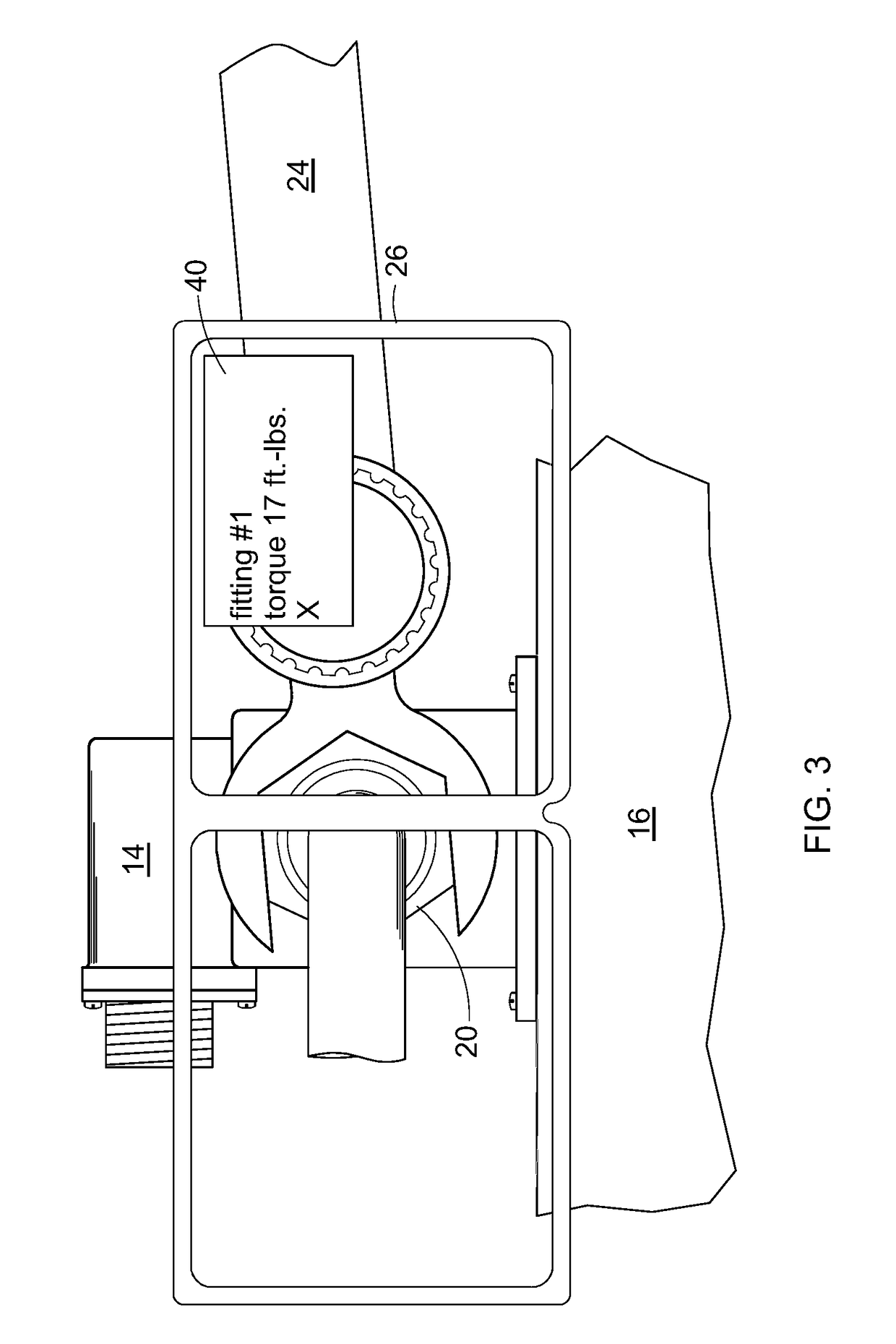System and method for using wearable technology in manufacturing and maintenance
a wearable technology and manufacturing and maintenance technology, applied in the field of wearable devices for manufacturing and maintenance, can solve the problems of inconvenient stopping work and climbing back to access documents, oversight or errors, and inability to automate assembly operations
- Summary
- Abstract
- Description
- Claims
- Application Information
AI Technical Summary
Benefits of technology
Problems solved by technology
Method used
Image
Examples
Embodiment Construction
[0017]Referring to the drawings wherein identical reference numerals denote the same elements throughout the various views, FIG. 1 illustrates schematically a wearable-integrated assembly system 10 for manufacturing, maintenance, or repair of a machine 12. As used herein the term “machine” refers broadly to any assembly of two or more components into a larger unit which performs a defined function. The term “machine” may refer to a complete device or a subassembly which is incorporated into a larger device.
[0018]In the illustrated example, the machine 12 includes a fluid pressure sensor 14 mounted to a frame 16. A fluid conduit 18 is connected to the fluid pressure sensor using a conventional threaded fitting 20, e.g. an AN818 coupling nut, conventionally referred to as a “B-nut”. The fluid pressure sensor 14 further includes an electrical connector 22 for connection to a wiring harness (not shown). It will be understood that proper assembly of the machine 12 for a leak-free seal re...
PUM
| Property | Measurement | Unit |
|---|---|---|
| torque | aaaaa | aaaaa |
| current | aaaaa | aaaaa |
| area | aaaaa | aaaaa |
Abstract
Description
Claims
Application Information
 Login to View More
Login to View More - R&D
- Intellectual Property
- Life Sciences
- Materials
- Tech Scout
- Unparalleled Data Quality
- Higher Quality Content
- 60% Fewer Hallucinations
Browse by: Latest US Patents, China's latest patents, Technical Efficacy Thesaurus, Application Domain, Technology Topic, Popular Technical Reports.
© 2025 PatSnap. All rights reserved.Legal|Privacy policy|Modern Slavery Act Transparency Statement|Sitemap|About US| Contact US: help@patsnap.com



